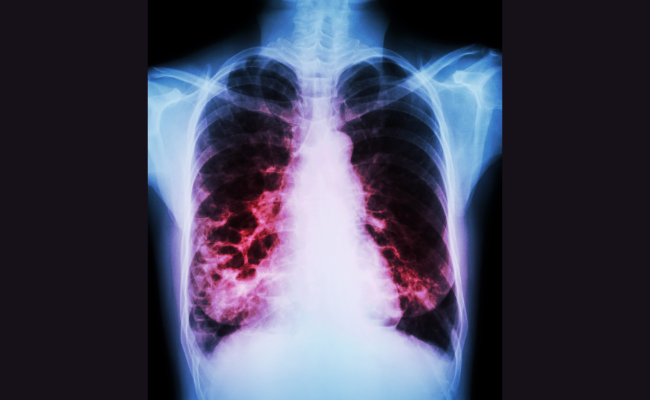How to Treat Bronchiectasis?
- December 12, 2023
- No Comments

What is Bronchiectasis?
Bronchiectasis is a chronic respiratory condition marked by the abnormal widening and thickening of the airways (bronchi) in the lungs. This aberration is frequently a consequence of recurring infections, inflammation, or damage to the airways, resulting in the accumulation of mucus and compromised clearance. This, in turn, initiates a cycle of infection and inflammation, exacerbating the bronchiectasis. Pronounced as "bronk-ee-EK-tuh-sis," this pulmonary ailment involves the widening and impairment of the airways, the tubes extending into the lungs. When these airways suffer compromise, their ability to efficiently clear mucus is hindered, creating a stagnant environment conducive to bacterial growth. This leads to heightened inflammation and additional harm to the lungs, inducing persistent coughing as the body strives to expel the infected mucus.
Why is Treating Bronchiectasis Important?
Effective treatment of bronchiectasis is crucial to manage symptoms, prevent complications, and improve the overall quality of life for individuals with this condition. Left untreated, bronchiectasis can lead to progressive lung damage, respiratory failure, and a reduced ability to perform daily activities due to persistent cough, shortness of breath, and recurrent respiratory infections.
How to Treat Bronchiectasis?
One of the primary goals in treating bronchiectasis is to clear excess mucus from the airways. Various airway clearance techniques can help achieve this, including:
- Chest Physiotherapy: Techniques such as postural drainage, percussion, and vibration can assist in loosening and moving mucus out of the lungs.
- Active Cycle of Breathing Techniques (ACBT): ACBT involves a combination of deep breathing, huffing, and coughing to clear mucus effectively.
- Positive Expiratory Pressure (PEP) Devices: These devices help maintain consistent pressure during exhalation, preventing airways from collapsing and promoting mucus clearance.
- Bronchodilators: Bronchodilators, commonly used in conditions like asthma and chronic obstructive pulmonary disease (COPD), can help alleviate bronchiectasis symptoms by relaxing the muscles around the airways. This facilitates improved airflow and reduces the sensation of breathlessness.
- Antibiotics: Since bacterial infections often contribute to the progression of bronchiectasis, antibiotics are frequently prescribed. The choice of antibiotics depends on the specific bacteria causing the infection, and the treatment may range from short courses to long-term prophylactic use.
- Mucolytic Medications: Mucolytics are drugs designed to thin and loosen mucus, making it easier to clear from the airways. This can help reduce the frequency of respiratory infections and improve overall lung function.
- Inhaled Corticosteroids: In some cases, inhaled corticosteroids may be prescribed to reduce airway inflammation. This can be particularly beneficial in managing symptoms and preventing exacerbations.
Treatment Solutions for Bronchiectasis:
- Individualized Treatment Plans: Given the diverse nature of bronchiectasis, treatment plans should be tailored to individual needs. A healthcare professional, typically a pulmonologist or respiratory therapist, will assess the severity of the condition and develop a personalized approach.
- Patient Education: Empowering individuals with bronchiectasis through education is essential. Patients should understand the importance of adhering to prescribed medications, engaging in airway clearance techniques, and recognizing early signs of exacerbations to seek prompt medical attention.
- Regular Monitoring and Follow-up: Continuous monitoring is crucial to track the progression of bronchiectasis and adjust treatment plans accordingly. Regular check-ups with healthcare providers allow for timely intervention and optimization of therapy.
- Pulmonary Rehabilitation: Pulmonary rehabilitation programs can be beneficial for individuals with bronchiectasis. These programs involve a combination of exercise, education, and support, aiming to enhance physical and emotional well-being.
Benefits of Treating Bronchiectasis:
- Symptom Management: Effective treatment can significantly alleviate symptoms such as chronic cough, shortness of breath, and fatigue, improving the overall quality of life for individuals with bronchiectasis.
- Prevention of Complications: Timely intervention and appropriate treatment help prevent complications associated with bronchiectasis, including recurrent respiratory infections, respiratory failure, and irreversible lung damage.
- Improved Lung Function: Airway clearance techniques and medications contribute to maintaining and improving lung function, ensuring better respiratory capacity and oxygen exchange.
- Enhanced Quality of Life: By managing symptoms and preventing exacerbations, individuals with bronchiectasis can lead more active, fulfilling lives, participating in daily activities without the burden of persistent respiratory issues.
- Reduced Healthcare Utilization: Proactive management of bronchiectasis reduces the frequency of hospitalizations and emergency room visits, resulting in decreased healthcare costs and a lighter burden on the healthcare system.
Comments (0)